| 1 | Attaching a wire to a PCB pad
|
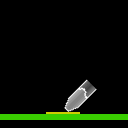 | Since this is what you'll likely be doing the most, this is our first lesson. This assumes you've cleaned and tinned your iron, tinned the wire and have a bare clean pad to attach to. First apply the iron to the pad and heat it.
|
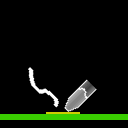 | Now apply the solder to the heated pad, not to the iron. The solder should flow onto the pad easily, resulting in a liquid bubble around the iron. If so, remove the solder, then the iron. If it doesn't, check that your pad is clean, and that your iron is on. If it's off the pad won't be hot. Or if it is on, the pad might not be hot enough.
|
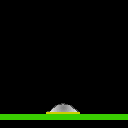 | This is what you should end up with. Remember that less solder is better. If there's a pointy peak where you removed your iron, or a trail across the PCB, you've used too damned much!
|
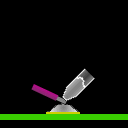 | Your wire should be stripped so that about 1-2mm of metal is showing. Too much risks shorting on other components, too litle makes it hard to use. Note that when you heat a wire the plastic sheath will retract, so it will end up a little longer than you started with. You can easily cut the wire to a workable length after you tin it. To attach this wire to your pretty solder-covered pad, place it onto the soldered pad, then rest the iron on top of the wire. As the iron heats the wire, the wire will heat the pad. When it's hot enough it will sink into the solder, and then you know you've got both components hot enough, and its just a matter of making sure the solder sourrounds and flows onto the wire. Remember kids, surface tension is your friend!
|
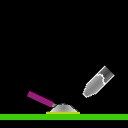 | Remove the iron and inspect your work. The wire should be solidly attached to the pad now. Make sure no excess solder has glommed onto adjacent components. You should always be frugal with your solder, you don't need much and using a lot will only lead to grief, madness, and global conflict.
|
|
| 2 | Attaching wire to wire
|
| The concept here is simple, except it demands three hands. There are ways around this, but you will need at least two hands, and some way to hold the third component. Important! If you're going to use shrink-tube to protect your new connection (and you really should 'cause electrical tape sucks) be sure to put it on the wire FIRST! I can't stress enough how much it sucks to have to undo your fine work 'cause you forgot the shrink tube.
|
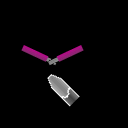 | Cross the tinned bits of your wire and then heat both so that the solder already on them flows around both pieces. Move the two wires together away from the iron and after about 2 seconds they should be permanently joined.
|
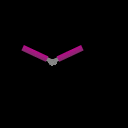 | You want to keep the two wires as close to the same angle as possible. It's easiest to join them at a ninety-degree angle, but you'll end up with sharp bits and it'll be less attractive, and take more space. On the other hand trying to attach them end-to-end is pure folly, you'll make yourself insane trying, because they'll pull apart the instant you try and move them away from the iron. The angle shown here is likely too extreme, but you're smart, you'll cope.
|
 | If you're using shrinktube, make sure you've picked tube small enough to shrink tightly against the wire. The bulges and sharp bits will hold the shrink very tightly. If you have sharp bits that are too sharp or too long you can cut them off with cutters. Slide your shrink tube onto the join, and rub the iron all over it to make it shrink.
|
|
| 3 | Soldering a component to a PCB via
|
 | Ladies and gentlemen, meet my friend Via. Also known as a through-hole, a via connects one side of a PCB with the other, using a metal cylinder connected on both sides to an trace line or component. Occasionally you're going to want to install a new component on a PCB with a via, and this is how you do it. Note one new thing: Tinning your via is a bad, bad idea. Sucking solder out of these little holes is a massive pain in the ass, so you'll want to insert your components un-tinned.
|
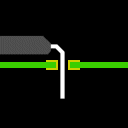 | Shown here is an Integrated Circuit (IC) but the same principles apply for any component, be it a resistor, diode or flux capacitor. Simply place the leg of the component through the hole. Typically the component will be snug against the PCB to minimize movement, but this may not always be the case. In the interest of saving space resistors are often shoved in vertically, for example.
|
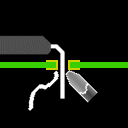 | Place your soldering iron against both the component and the via, so that both are heated, and then apply the solder. The solder should flow easily onto both parts. Note that it doesn't really matter which side of the PCB you do this on, as they're obviously connected, and the solder will often flow through the via. This makes it quite difficult to remove and re-use, so be careful - get the right component in the right hole the first time!
|
 | Remove the heat, and you're done! This is possibly the easiest thing to solder. Be sure to trim those long legs on the underside of the PCB tho, typically 2-3mm is the max length for anything sticking through the PCB.
|












